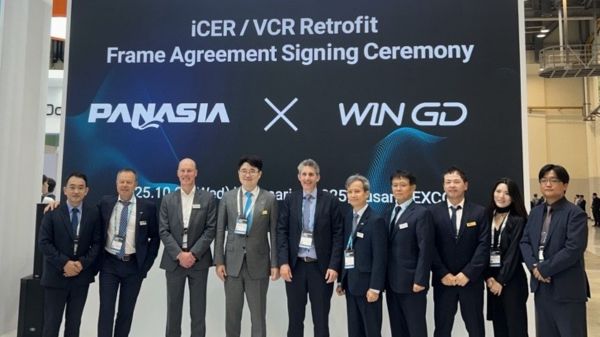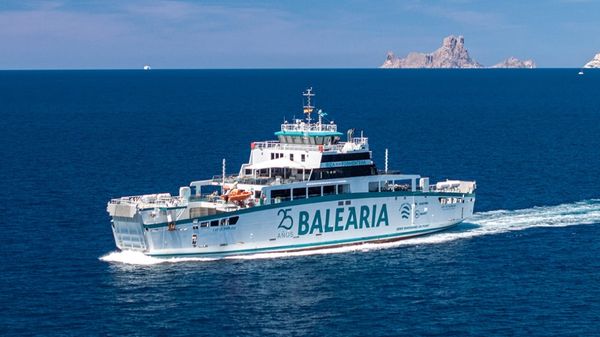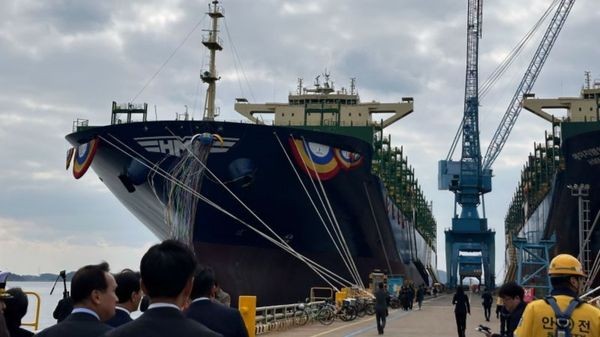Hong Kong public policy think tank
Civic Exchange today released a report outlining the threats to public health caused by rising toxic emissions from the rapid growth of marine related activities in
Hong Kong and
Shenzhen.
The report entitled
“Green Harbours: Hong Kong & Shenzhen – Reducing Marine and Port-related Emissions” also identifies a number of short medium and long-term solutions for tackling the problem, and calls on the Hong Kong SAR and Shenzhen Governments to develop a strategy to reduce the threats based on best practice from around the world.
“The volume of shipping-related air pollution and the corresponding threats to public health are real, growing, and beyond dispute,” said
Christine Loh, Chief Executive of Civic Exchange. “The Government now has a digest of actions from which to build a strategy to reduce the toxic hidden costs of an industry that is vital to Hong Kong and Shenzhen.”
The report notes that elsewhere, especially Europe and North America attitudes are changing to reflect these concerns. It says that governments are responding to public health concerns with both increasingly stringent emissions controls and incentives to port operators and shipping companies to reduce emissions.
Some emissions-reducing actions have already been implemented in Hong Kong and Shenzhen. These include partnering with other ports to introduce better practices and Government controls on the upper limit of sulphur content in bunker fuel burned by ships.
The report points out that the region still lags behind Europe and North America. It also says that local port operators and ship-owners are calling on the Hong Kong and Shenzhen Governments to set much tighter standards.
The document mentions that the Hong Kong Shipowners' Association (HKSOA) and other shipping organisations supported a proposal to further reduce the sulphur content of fuel oil used closer to land, but this did not survive the regulatory process.
The proposal would have created Micro-ECAs, or Low Emission Control Areas (LECAs) which could be created under less onerous conditions than those required to justify SECAs, but would apply only to a single state, 24 miles out from the baseline and 100 miles along the coast. The sulphur content of fuel to be used within these areas would have been restricted to 0.1%.
According to the report, this would have been particularly suitable for the Pearl River Delta (PRD) region because it would have given a base for Hong Kong and Shenzhen collaboration. Furthermore, the proposal could be used as a formula for a regional restriction, extending out to the limits of Chinese territorial waters.
The report mentions the fuel that is used by local craft in Hong Kong is low sulphur distillate fuel with 0.3% to 0.5% sulphur content, far lower than Annex VI’s current 4.5% cap. Even so, legislators in Hong Kong have raised the question of whether the authorities intended to implement even stricter standards on local craft sailing between Hong Kong and locations within the PRD. In his 2007-2008 policy agenda, the Hong Kong Special Administrative Region (HKSAR) Chief Executive, promised to “study” the use of cleaner fuels for these vessels to reduce emissions from ships and address this concern.
“The good news is that emitters are already taking positive steps to reduce emissions, from using electric quayside machinery to burning cleaner fuel,” noted
Simon Ng Visiting Scholar at the Institute for the Environment, Hong Kong University of Science & Technology. “What we need now is for the Government to step forward and champion a comprehensive green port initiative for both Hong Kong and the neighbouring ports in Shenzhen."
Beyond Hong Kong, local shipowners are already playing an important role in pushing for the introduction of new measures to address the threats of toxic emissions and climate change. Since they must operate in destination ports all over the world, shipping lines are already familiar with practices in other leading ports such as Long Beach and Rotterdam. Many are eager to see co-operative agreements for cross boundary jurisdictions introduced to the Pearl River Delta.
Arthur Bowring, Managing Director of the Hong Kong Shipowners’ Association noted: “We are very much aware of the effect that ship emissions have on the health of people who live close to shipping channels and port areas, and are keen to encourage global regulation that will dramatically reduce these emissions without introducing competitive disadvantage. The members of our Association have experience in complying with policies and practices that improve air quality in ports and harbours around the world, and are keen to work with the Hong Kong and Shenzhen Governments in formulating policies that will reduce air pollutants from ships in the Pearl River Delta.”
The full report can be found at the following address:
http://www.civic-exchange.org/eng/upload/files/GH_report.pdf










